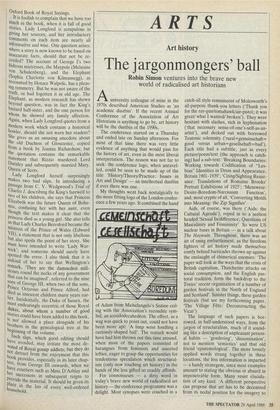To place beside the throne
Steven Runciman
THE OXFORD BOOK OF ROYAL ANECDOTES edited by Elizabeth Longford
OUP, £16, pp.546
What is an anecdote? In her introduc- tion to this entertaining anthology — if anthology is not too elegant a word for a collection some of whose contents are definitely crude — Lady Longford attempts to give a general definition. An anecdote should be attached to an event. It should have 'punch'. Ideally it should have a touch of 'funny ha, ha' or 'funny peculiar'. Events that go wrong are better candidates than things that go smoothly. She implies that they do not necessarily need to be true, though their source should be given wherever possible. Royal person- ages are ideal subjects for anecdotes be- cause of their prominence in society. In- deed, one can go a little further than she does and explain that the fascination of Royal stories lies in the fact that they are about ordinary human beings who have been brought up and who live in circum- stances that are to the rest of us curiously unreal.
This collection seems, however, to embrace rather more than Lady Long- ford's definitions should allow. I do not see how lines by Lord Tennyson on the legen- dary King Arthur qualify for inclusion. Some of the entries about the Anglo-Saxon kings belong to history rather than to anecdote. Extracts from Shakespeare's works about the Plantagenet kings are hardly relevant, interesting though they may be in showing what the Bard and his contemporaries felt about those monarchs. Again, is it quite fair to cite Thackeray's The Four Georges, when she admits that he was not a contemporary historian but a 19th-century satirist? We have a large collection of Royal sayings, most of them highly entertaining and illuminating; but a single saying surely does not constitute an anecdote. It can be part of an anecdote, as in the story of Lord Oxford returning to the Court after seven years of self-imposed exile, due to his having let out a fart in the presence of Queen Elizabeth, and the Queen greeting him wickedly with the words: 'My lord, I had forgot the fart.' But most of the sayings stand by themselves. Perhaps we should have had a separate Oxford Book of Royal Sayings. It is foolish to complain that we have too much in the book, when it is full of good stories. Lady Longford is scrupulous in giving her sources; and her introductory comments on each item are nearly all informative and wise. One question arises: Where a story is now known to be based on inaccurate facts, should that not be re- corded? The account of George I's two hideous mistresses, the Maypole (Melusine von Schulenberg), and the Elephant (Sophia Charlotte von Kilmansegg), as recounted by Horace Walpole, has a pleas- ing symmetry. But he was not aware of the truth, or had fogotten it in old age. The Elephant, as modern research has shown beyond question, was in fact the King's bastard half-sister, and the one person for whom he showed any family affection. Again, when Lady Longford quotes from a modern work which contains a historical howler, should she not warn her readers? She gives us an amusing anecdote about the old Duchess of Gloucester, copied from a book by Joanna Richardson; but the quotation contains the remarkable statement that ' Rizzio murdered Lord Darnley and subsequently married Mary, Queen of Scots.'
Lady Longford herself surprisingly makes two bad slips. In introducing a Passage from C. V. Wedgwood's Trial of Charles I, describing the King's farewell to two of his children, she says that Princess Elizabeth was the future Queen of Bohe- mia, confusing her with her aunt, even though the text makes it clear that the princess died as a young girl. She also tells US that Lady Charles Beresford became the mistress of the Prince of Wales (Edward VII), a statement that is not only libellous but also Spoils the point of her story. She must have intended to write 'Lady War- Wick; and and someone should surely have spotted the error. I also think that it is unkind of her to say that Wellington's remark, 'They are the damnedest mill- stones round the necks of any government that can be imagined', referred to the nine sons of George III, when two of the sons, Prince Octavius and Prince Alfred, had died as innocent children many years ear- lier. Incidentally, the Duke of Sussex, the Most endearingly eccentric of those Royal dukes, about whom a number of good stories could have been added to this book, is not allowed a place alongside of his brothers in the genealogical tree at the beginning of the volume. Such slips, which good editing should have avoided, may irritate the most de- voted of Royal gossip addicts; but they do not detract from the enjoyment that this book provides, especially in its later chap- ters, from George III onwards, when we liiiave courtiers such as Mme D'Arblay and er successors in subsequent reigns to provide the material. It should be given its Place in the loo of every well-ordered household.



















































 Previous page
Previous page